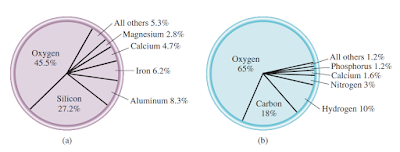Where did we come from? How did the
universe begin? Humans have asked these questions for as long as we have been
able to think. The search for answers provides an example of the scientific
method.
In the 1940s the Russian-American
physicist George Gamow hypothesized that our universe burst into being billions
of years ago in a gigantic explosion, or Big Bang. In its earliest
moments, the universe occupied a tiny volume and was unimaginably hot. This
blistering fireball of radiation mixed with microscopic particles of matter
gradually cooled enough for atoms to form. Under the influence of gravity,
these atoms clumped together to make billions of galaxies including our own
Milky Way Galaxy.
Gamow’s idea is interesting and
highly provocative. It has been tested experimentally in a number of ways.
First, measurements showed that the universe is expanding; that is, galaxies
are all moving away from one another at high speeds. This fact is consistent with
the universe’s explosive birth. By imagining the expansion running backward,
like a movie in reverse, astronomers have deduced that the universe was born
about 13 billion years ago. The second observation that supports Gamow’s
hypothesis is the detection of cosmic background radiation. Over
billions of years, the searingly hot universe has cooled down to a mere 3 K (or
2270°C)! At this temperature, most energy is in the microwave region. Because
the Big Bang would have occurred simultaneously throughout the tiny volume of
the forming universe, the radiation it generated should have filled the entire
universe. Thus, the radiation should be the same in any direction that we
observe. Indeed, the microwave signals recorded by astronomers are independent
of direction.
 |
| A color photo of some distant galaxy, including the position of a quasar. |
The third piece of evidence
supporting Gamow’s hypothesis is the discovery of primordial helium. Scientists
believe that helium and hydrogen (the lightest elements) were the first
elements formed in the early stages of cosmic evolution. (The heavier elements,
like carbon, nitrogen, and oxygen, are thought to have originated later via
nuclear reactions involving hydrogen and helium in the center of stars.) If so,
a diffuse gas of hydrogen and helium would have spread through the early
universe before many of the galaxies formed. In 1995, astronomers analyzed ultraviolet light from a distant quasar (a
strong source of light and radio signals that is thought to be an exploding
galaxy at the edge of the universe) and found that some of the light was absorbed
by helium atoms on the way to Earth. Because this particular quasar is more
than 10 billion light-years away (a light-year is the distance traveled by
light in a year), the light reaching Earth reveals events that took place 10
billion years ago. Why wasn’t the more abundant hydrogen detected? A hydrogen
atom has only one electron, which is stripped by the light from a quasar in a
process known as ionization. Ionized hydrogen atoms cannot absorb any of
the quasar’s light. A helium atom, on the other hand, has two electrons.
Radiation may strip a helium atom of one electron, but not always both. Singly
ionized helium atoms can still absorb light and are therefore detectable.
Proponents of Gamow’s explanation rejoiced at the
detection of helium in the far reaches of the universe. In recognition of all
the supporting evidence, scientists now refer to Gamow’s hypothesis as the Big
Bang theory.











